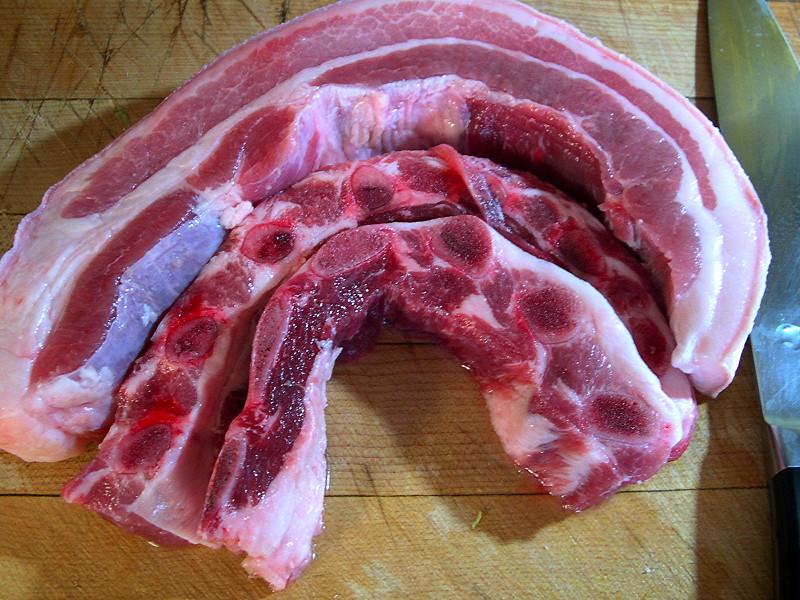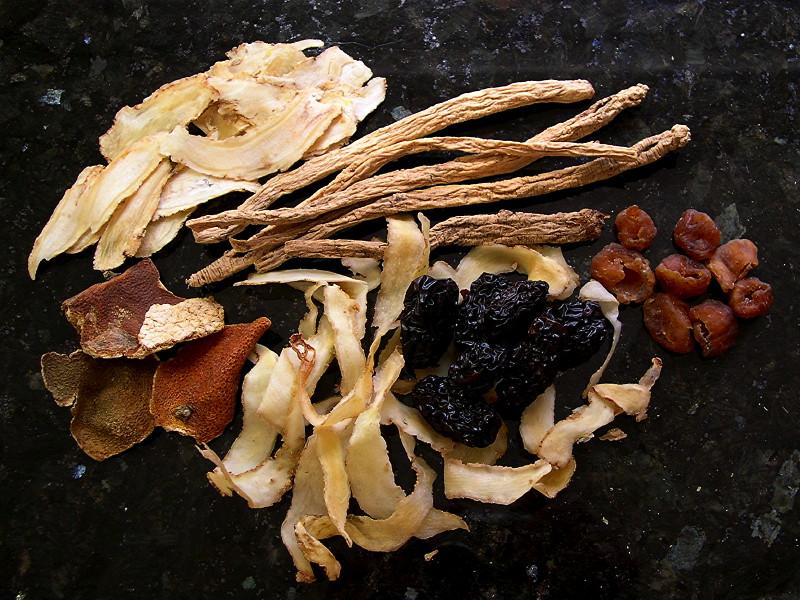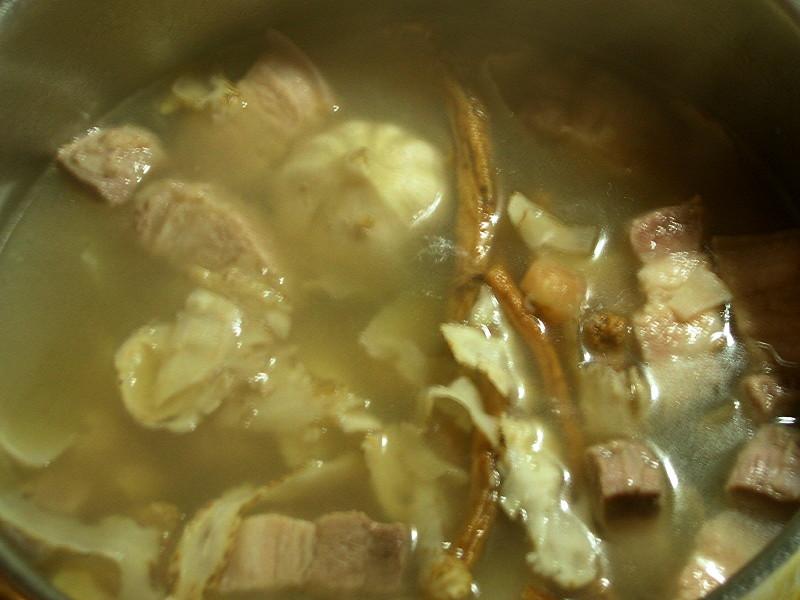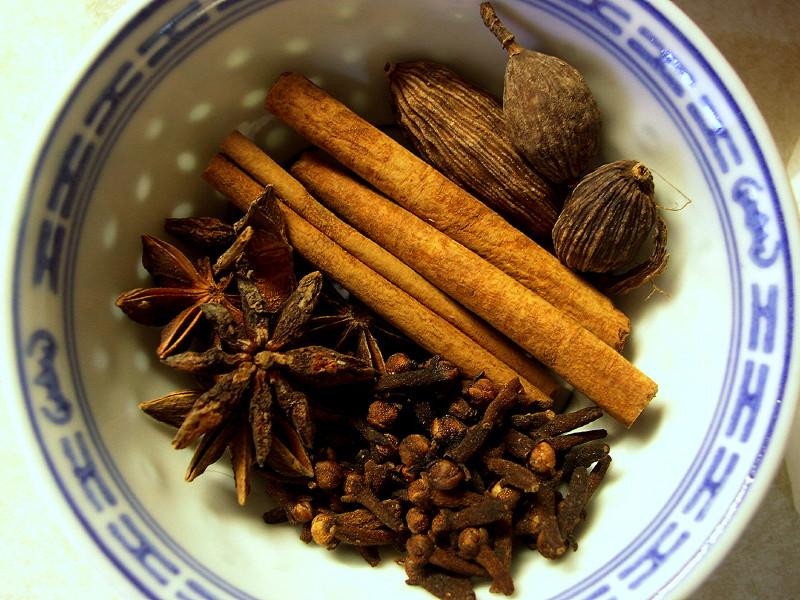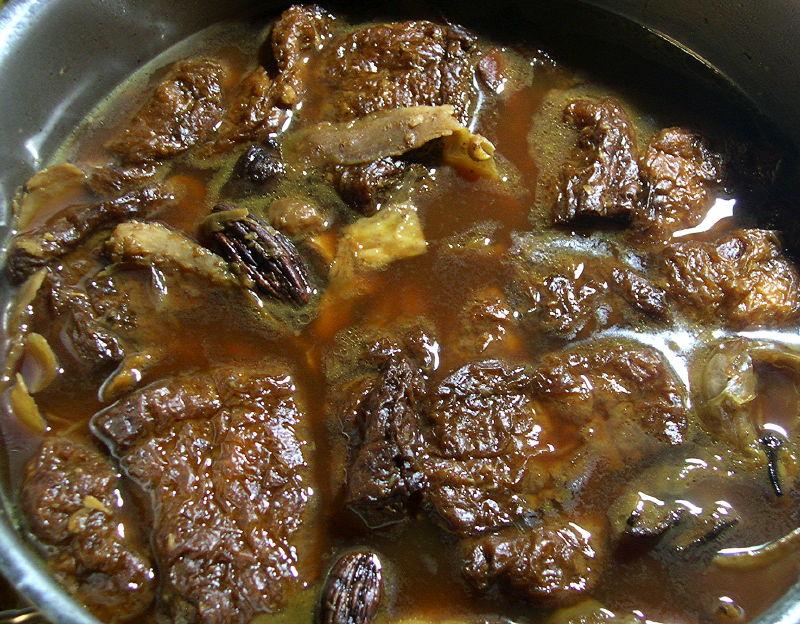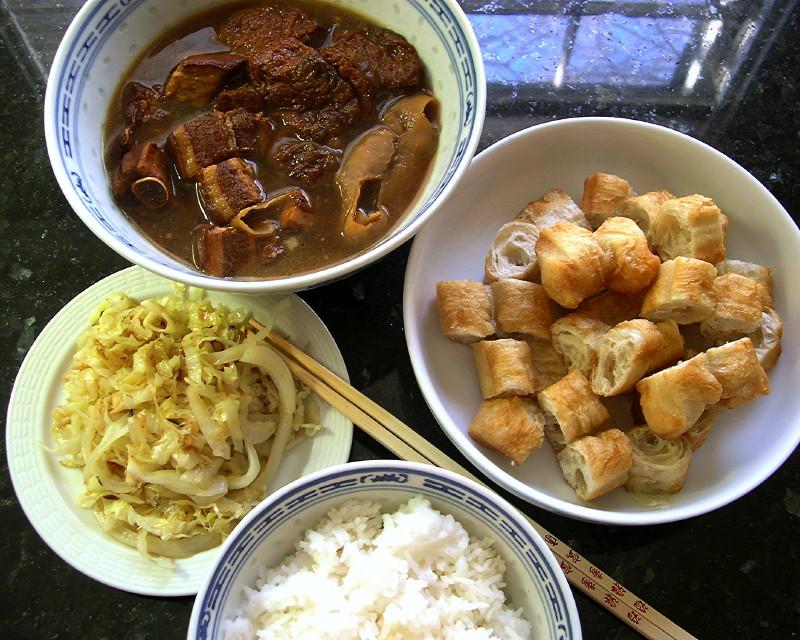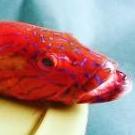Pork Belly Bak Kut Teh.
Bak Kut Teh (肉骨茶), literally "Pork¶ Bone Tea" (in the Hokkien dialect), is a widely-eaten dish in certain parts of Malaysia and Singapore, with lesser consumption in other areas of Malaysia and SE Asia. Every vendor of BKT will have available, at a minimum, pork spare ribs or meaty pork ribs as meat choices. The other "meats" that will be widely available include pork belly, pig trotters, pork hocks, pig intestines (large & small), etc. There are different "styles" of BKT and the Wiki article discusses the broad categories of them; while individual vendors will, aside from the meat(s) selections, may have their "own" idiosyncratic versions and/or hot-pot versions and/or the inclusion of stuff like enoki mushrooms or other mushrooms, Napa cabbage ("wong nga pak"), etc etc. The rice that is served also may vary from rice cooked in stock w fried shallots and garlic to simple plain white rice, and one or the other kind may be hated or loved by one or another aficionado of BKT. Chinese crullers (油炸鬼; yau4 ja3 gwai2 (Yale) in Cantonese) are also a common accompaniment for BKT, and some folks shun rice in favor of a plate or two of crullers alone.
¶In Chinese the character "肉" actually means, simply, "meat". However, in the absence of any modifiers or qualifiers the default meaning when talking about Chinese (and Chinese-type) cuisine is pork, unless the context indicates something else. (beef would be called "牛肉"; mutton/lamb would be called "羊肉" - as examples)
See the Google image set embedded in "肉骨茶" above for examples of this dish. One will see different combinations of cuts of meat, including pork belly slices of course; in soups of varying darkness and with varying accompaniments. :-)
I've not infrequently made BKT with pork spare ribs and meaty ribs before. This time, I made BKT with pork belly and short-cut pork spare ribs; using a selection of herbs in a variation of the Canto-Hoklo style.
The pork belly strip and the ribs:
These were cut-up into chunks. The pork belly went into water with two whole heads of garlic and brought towards a simmer. A selection of herbs were added in, the mixture brought to a boil, then lowered to a brisk simmer. A little sea salt was added. Minimal skimming was needed.
Samples of the herbs and other stuff that went in. (Somewhat more of the dried roots/shaved rhizomes than shown actually went in)
Starting from top left and going clockwise: Angelica sinensis, Codonopsis pilosula Nannf., dried longan meat, Polygonatum odoratum, dried tangerine peel; and sitting on the P. odoratum is a particular sort-of smoked variety (called "lam jou") of big select dates of Ziziphus jujuba. See here for additional info about these herbs &etc.
Pic of the pot w/ stuff (somewhat blurry, sorry) after the herbs &etc went in:
After simmering (covered) for maybe ½ an hour the pork rib(lets) went in and the mixture simmered maybe 20 min to ½ an hour more. The spices (see below) then went in, followed by the sauce mixture (dark soy sauce [Yuet Heung Yuen], light soy sauce [Kikkoman], oyster sauce [Lee Kum Kee]) and the mixture simmered (covered for a while more (maybe ½ an hour to 40-45 minutes more. Abura-age (I used "sushi-age" pouches) each piece cut in half went in towards the end.
The pork ribs, sauce mix, abura-age:
The spices: cloves, star anise pods, cinnamon sticks, black cardamom (草果):
The completed BKT after resting:
Eaten with cut-up Chinese crullers (reheated/recrisped in the oven), simple stir-fried green cabbage w/ garlic & salt, white rice (Hom Mali).


